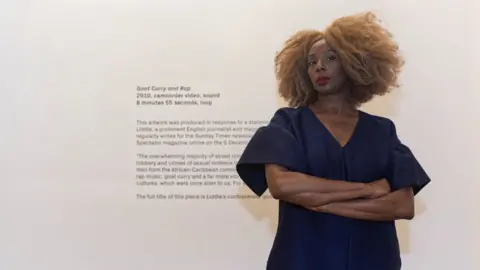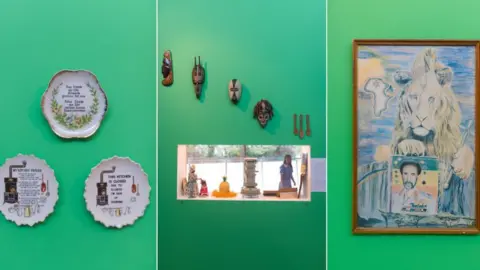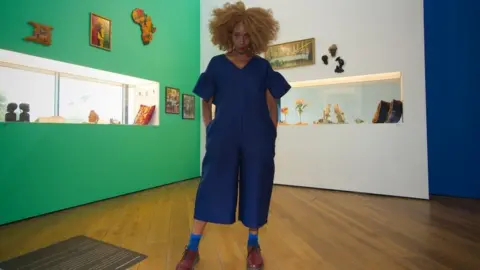The black artist taking on the 'Essex Girl' stereotype
 BBC
BBCAn artist has said she wanted to take on the "Essex girl" stereotype by exploring what it is like to be a "woman of colour" in the county.
Elsa James, 51, has a residency at the Firstsite gallery in Colchester.
She described her current project - Black Girl Essex - "as an exploration of being black in Essex".
Ms James said she hoped to speak with people about their experiences of living in Essex before producing an artwork based on those conversations.

"It's an exploration of being black in Essex," said Ms James, a former fashion model who also once worked in an amusement arcade.
"I've been here for two decades and I've been thinking about how I feel about living here but I'm really interested in talking to other people of colour in the community and finding out what their experiences are and then feeding that into some work."

The 'Essex Girl' stereotype
 ITV
ITV- The origins of this label possibly lie with the concept of Essex man that emerged in the early 1990s
- Journalist Simon Heffer used the term to denote a new type of Conservative voter who was "young, industrious, mildly brutish and culturally barren". Such men were typically self-made and had benefitted from the policies of Margaret Thatcher, he said
- An article in The Independent from November 1991 told of the recent "craze" for Essex girl jokes
- The newspaper said the jokes had been imported from the United States, where they had originated as "blonde" jokes before being adapted for a British audience

Southend-based Ms James said one of the driving forces of Black Girl Essex was her own feelings about being black and living in Essex.
"I came to a point where I realised I was actually a bit ashamed of saying, especially to folks in London, that I lived in Essex," she said.
"And coupled with Essex as a county that is looked down upon and the Essex girl stereotype which we all know about.
"It was a stigma for me and I wanted to explore that and to find out what other black folks felt like living here. Through this residency I would like to have those conversations."


Her workspace is an area of the gallery called the Living Room, which has been furnished with photographs, sculptures and artefacts from the homes of people of African-Caribbean heritage.
"The objects in the cabinet are all pieces and photographs that really conjure up or have the essence of all things that are Caribbean," Ms James said.
"My parents are from the Windrush generation and there are many items in these cabinets that are very typical of all of my uncles and aunts' houses.
"They are just treasured items that kind of standardise a community and the way a community would collect things. These objects all seem to be very similar."
The residency, funded by the Arts Council, will run until September and the conversations collected during her project will be used for an exhibition called Super Black in October.

